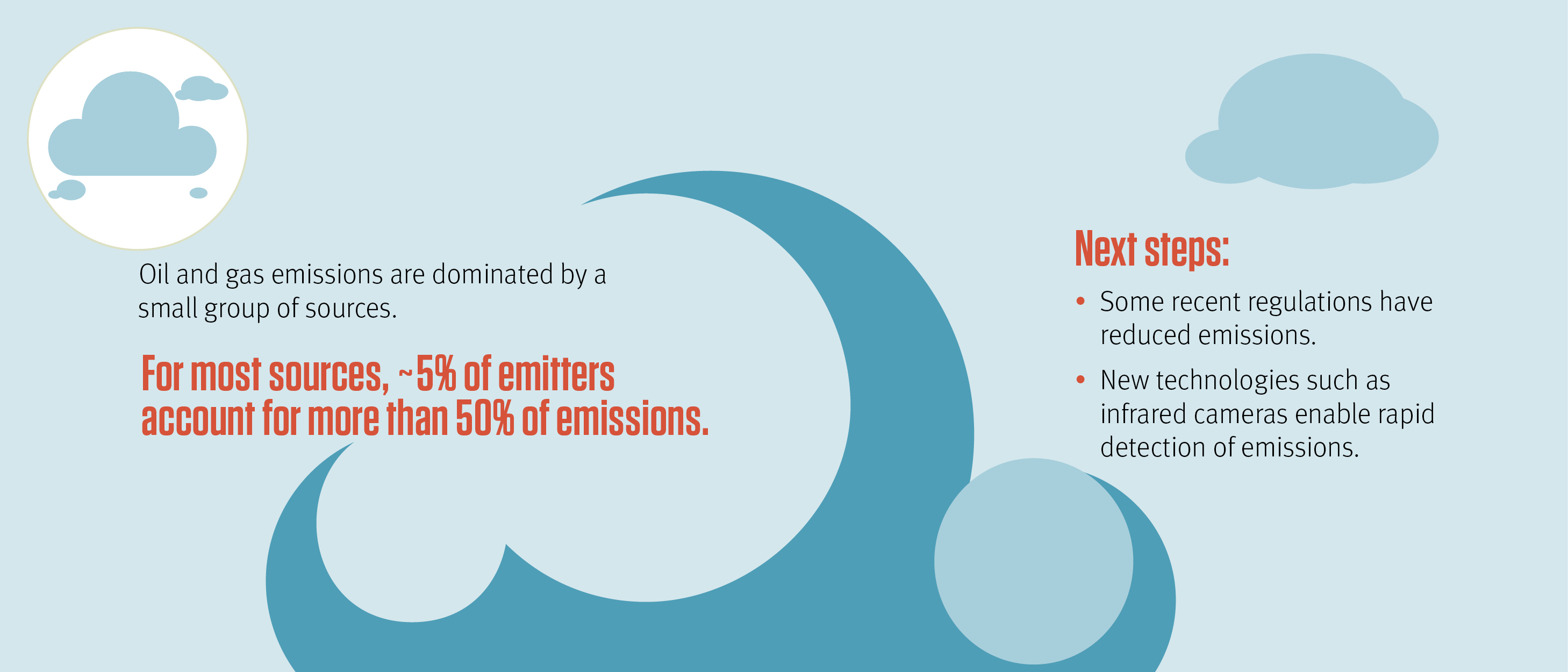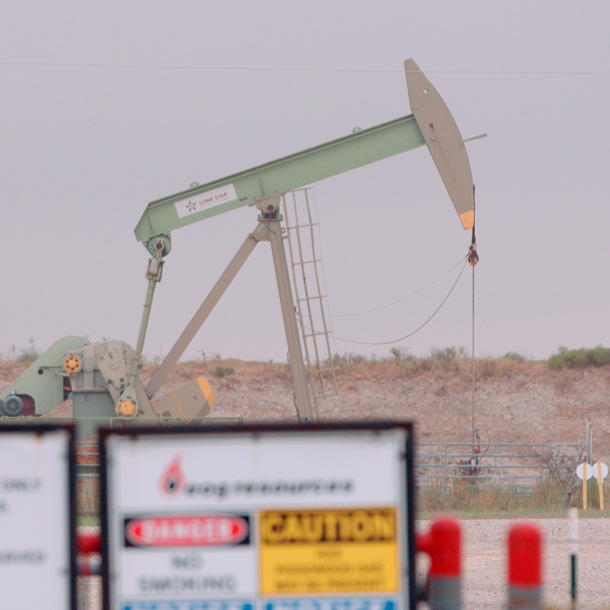Air Impacts

- For most types of oil and gas emission sources, ~5% of emitters account for more than 50% of emissions.
- Recent federal regulations have reduced emissions.
- New technologies, such as infrared cameras, enable rapid detection of emissions.
- The primary change in emissions from shale development is due to the increase in activity of oil and gas development, and not to the unique nature of the shale resource.
Frequently Asked Questions
The production of shale oil and gas results in emissions of greenhouse gases, photochemical air pollutants and air toxics. Air emission sources from shale oil and gas development are diverse, have complex behavior and are distributed across a large number of individual sites.
What is a “super-emitter?”
In many source categories, emissions associated with shale oil and gas development are dominated by a small sub-population of high-emitting sources, sometimes referred to as “super-emitters.” One of the findings of the report is that for most types of oil and gas emission sources, ~5% of emitters account for more than 50% of emissions.
What are the air impacts of shale oil and gas development?
Human health impacts of shale oil and gas development occur over local and regional scales over time periods that range from hours to decades. Because of the complexity and variability of these impacts, a scientific understanding of these impacts is just beginning to emerge. The task force recommended that targeted research in this area should be conducted.

“Although characterizing the impacts of the production and use of shale resources on air quality is challenging, emissions from oil and gas production basins in Texas have been studied and characterized to a greater extent than production regions in most other states and our understanding continues to improve.”
~David Allen, NAE, The University of Texas at Austin
Air Findings
- The production of shale resources results in emissions of greenhouse gases, photochemical air pollutants and air toxics.
- Recent federal and state regulations have reduced emissions from multiple types of emission sources.
- Emissions in many categories associated with shale resource production are dominated by a small sub-population of high-emitting sources.
- Development of inexpensive, robust, reliable and accurate methods of rapidly finding high-emitting sources has the potential to reduce emissions.
- Shale resource development both directly and indirectly impacts air quality. Indirect impacts include reductions in emissions associated with the substitution of natural gas for coal in electricity generation. Comprehensive assessments of both direct and indirect impacts to air quality from the production of shale resources are complex.
Air Recommendation
- There is limited information concerning exposures to air toxics emissions and their corresponding health impacts. Targeted research in this area should be conducted.

David Allen, NAE (Lead)
The University of Texas at Austin

Ramón Alvarez
Environmental Defense Fund

Matthew Harrison
AECOM: Americas – Upstream Oil & Gas

